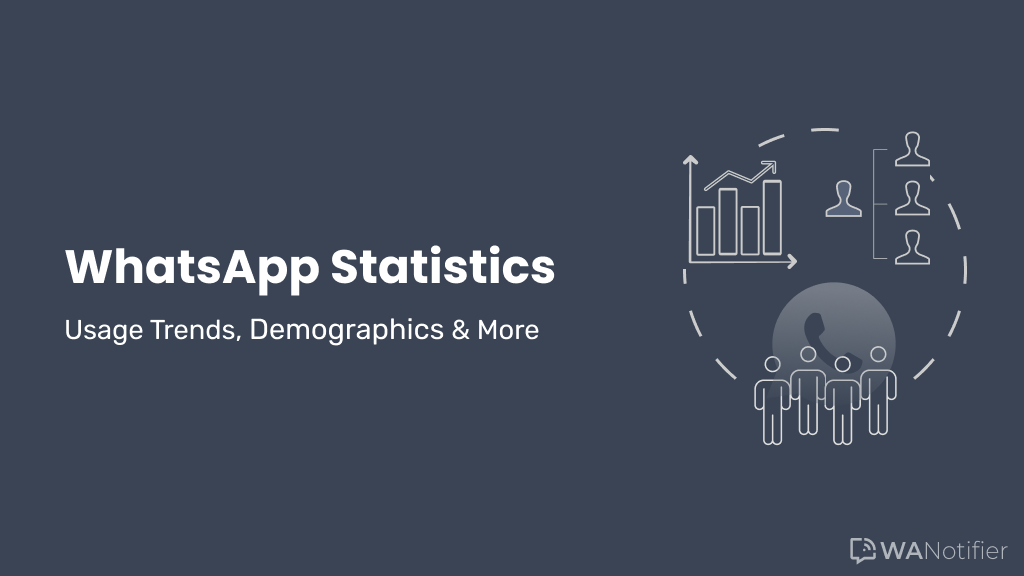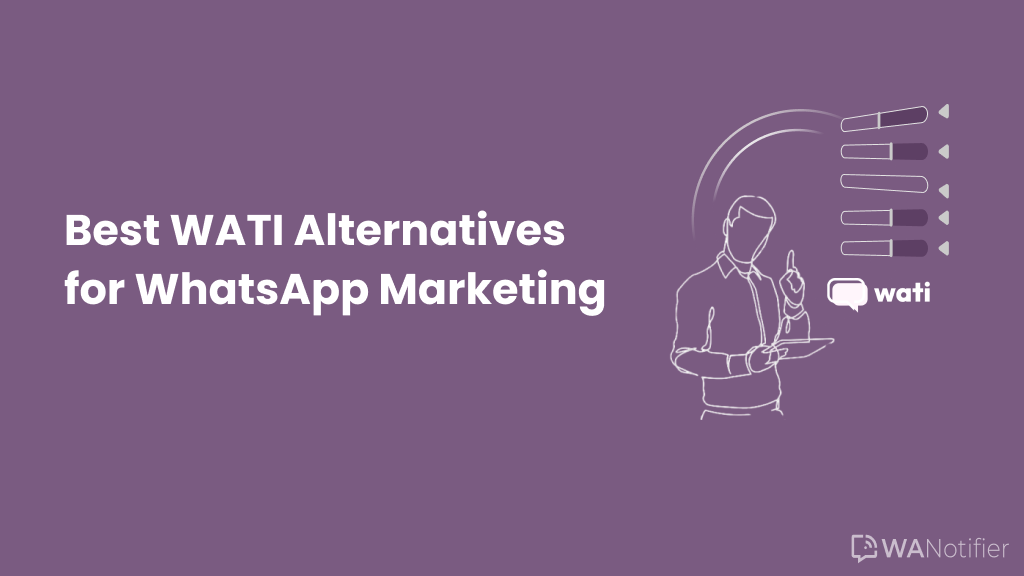WhatsApp, a name synonymous with instant messaging, has journeyed from a simple status update application to the world’s most popular messaging service. Launched in 2009 by former Yahoo employees Brian Acton and Jan Koum, WhatsApp revolutionized communication with its user-friendly platform that integrated seamlessly with users’ phone numbers.
Initially exclusive to iOS, the app saw a significant turning point in 2010 with its launch on Android, rapidly growing to 250,000 users. The platform’s user base exploded to 200 million by 2013, drawing Facebook’s attention, which acquired WhatsApp for $19 billion in 2014.
This acquisition marked one of the largest in tech history and highlighted WhatsApp’s potential threat to existing communication giants. Despite controversies over data sharing with its parent company, WhatsApp continued to innovate, introducing features like voice and video calls, WhatsApp Business, WhatsApp API, and even integrating payment systems in major markets like India and Brazil.
This article dives deep into the latest WhatsApp statistics that illustrate its pivotal role in shaping global communication trends. Stay tuned as we explore the data that underscores WhatsApp’s enduring popularity and strategic evolution in the digital age.
Table of Contents
WhatsApp General Statistics
WhatsApp is the most widely used messaging platform globally and the second most downloaded app on the Google Play Store, after TikTok. Let’s take a look at some interesting facts about this messaging platform that billions rely on every day.
- WhatsApp is the most used messaging app of all time, with an estimated 3 billion monthly active users (source – Statista)
- India has the largest number of WhatsApp users, with approximately 853.8 million people using the platform.
- WhatsApp is the second most downloaded app on the Google Play Store.
- WhatsApp is the 4th most downloaded app in the world
- Around 38% of the global population uses WhatsApp, and 69% of all internet users (excluding China) are on the platform.
- Facebook acquired WhatsApp for a staggering $19.6 billion in cash and stock. It remains Facebook’s largest acquisition to date and one of the biggest in tech history.
- In October 2011, one billion messages were being sent on WhatsApp every single day.
- In February 2020, WhatsApp reached the milestone of 2 billion users.
WhatsApp Users by Country
WhatsApp is available for download in over 180 countries. While its global reach has expanded significantly in recent years, the majority of its user base comes from a handful of countries where the app is most popular.
The following is a list of the top ten countries with the highest number of WhatsApp users:
| Country | Number of Users |
| India | 853.8M |
| Brazil | 148M |
| Indonesia | 112M |
| United States | 98M |
| Philippines | 88M |
| Mexico | 77M |
| Russia | 66.7M |
| Turkey | 60M |
| Egypt | 56M |
| Pakistan | 52M |
Source: World Population Review
Fastest Growing Markets for WhatsApp
As more countries adopt WhatsApp, its user base continues to grow rapidly. According to recent data, the fastest-growing markets for WhatsApp are:
| Country | Growth in WhatsApp Downloads |
| Vietnam | 38.18% |
| Italy | 36.1% |
| Switzerland | 32.15% |
| Russia | 31.54% |
| United Kingdom | 20.23% |
| Kuwait | 17.94% |
| France | 17.47% |
| Philippines | 16.39% |
| Thailand | 16.05% |
| Netherlands | 15.92% |
Source: Statista
Monthly Active Users
Since its launch in 2009, WhatsApp has shown consistent growth year after year. In fact, WhatsApp experienced a rapid increase in the number of users in the past few years, adding a billion users between 2016 and 2020, and another billion from 2020 to 2024. Today, WhatsApp has nearly 3 billion monthly active users. Let’s take a look at how its user base has grown over the years:
| Date | Number of Users |
| October 2010 | 10 million |
| December 2011 | 50 million |
| July 2012 | 75 million |
| October 2012 | 100 million |
| January 2013 | 133 million |
| March 2013 | 166 million |
| April 2013 | 200 million |
| June 2013 | 250 million |
| August 2013 | 300 million |
| October 2013 | 350 million |
| December 2013 | 400 million |
| January 2014 | 430 million |
| February 2014 | 465 million |
| April 2014 | 500 million |
| August 2014 | 600 million |
| January 2015 | 700 million |
| April 2015 | 800 million |
| September 2015 | 900 million |
| February 2016 | 1 billion |
| January 2017 | 1.2 billion |
| July 2017 | 1.3 billion |
| December 2017 | 1.5 billion |
| February 2020 | 2 billion |
| September 2021 | 2.16 billion |
| April 2022 | 2.24 billion |
| July 2023 | 2.7 billion |
| July 2024 | 2.9581 billion |
| March 2025 | 3 billion |
Number of WhatsApp Messages Sent Per Day
As of 2023, WhatsApp handles the exchange of over 140 billion messages per day. Woah — that’s a staggering number! To put it into perspective:
- Approximately 5.83 billion messages are sent every hour
- Around 97.2 million messages are sent every minute
- Roughly 1.62 million messages are sent every second
Here is some additional data:
| Date | Number of Messages Exchanged |
| October 2011 | 1 billion |
| January 2015 | 30 billion |
| February 2016 | 42 billion |
| July 2017 | 55 billion |
| March 2018 | 65 billion |
| October 2020 | 100 billion |
| July 2023 | 140 billion |
Source: WhatsApp blog, Statista, Venturebeat
WhatsApp User Demographics by Gender
The gender distribution of WhatsApp users is not an even 50/50 split. According to recent statistics, more men use WhatsApp than women. To be exact, approximately 51.8% of WhatsApp’s user base is male, while around 48.1% is female (source: Statista)
WhatsApp Revenue and Valuation
WhatsApp has always been a profitable company since its beginning. Although WhatsApp Messenger is completely free to use, WhatsApp still manages to make sustained profits. WhatsApp makes the majority of its revenue from WhatsApp Business API.
During its initial days, WhatsApp had a seed funding of merely $250,000 put together by Brian Acton, Jan Koum, and some of their colleagues at Yahoo.
Later on, Facebook acquired WhatsApp for $19.6 billion in February 2014. WhatsApp’s ownership accounted for about 10% of Facebook’s value at the time of acquisition.
According to a few reports, an individual WhatsApp user is worth about $44 dollars to the company. Hence, keeping the current number of individual users, WhatsApp’s valuation should be 118.8 billion as of 2023.
Let us dive into how much revenue WhatsApp has collected in the last few years:
| Year | Revenue ($mm) |
| 2018 | 443 |
| 2019 | 507 |
| 2020 | 632 |
| 2021 | 790 |
| 2022 | 906 |
| 2023 | 1279 |
| 2024 | 1785 |
Source: Business of apps
Download Statistics
Since its launch in 2009, WhatsApp has remained one of the most popular messaging apps for connecting with friends and family. Over the years, it has consistently ranked among the most downloaded apps on both iOS and Android.
Here are some key statistics illustrating the growth of WhatsApp downloads over time:
| Year | Number of Downloads ($bn) |
| 2013 | 0.5 |
| 2014 | 0.8 |
| 2015 | 1.2 |
| 2016 | 2 |
| 2017 | 2.9 |
| 2018 | 3.4 |
| 2019 | 4.1 |
| 2020 | 4.7 |
| 2021 | 5 |
| 2022 | 5.4 |
| 2023 | 5.8 |
| 2024 | 6.3 |
Source: Meetanshi, Business of Apps
Ratings
WhatsApp has received a cumulative rating of 4.2 out of 5.0 from Android users on the Google Play Store, based on 208 million reviews.
On the App Store, iOS users have given WhatsApp a cumulative rating of 2.7 out of 5.0, based on 4.6 million reviews.
Countries Where WhatsApp Is Restricted or Banned
WhatsApp is banned in several countries, including China, North Korea, Iran, and Syria. Other countries such as Qatar, the UAE, Oman, and Jordan have restricted certain WhatsApp features, like voice and video calls, due to strict VoIP regulations.
Age Group Statistics
WhatsApp is popular across all age groups, catering to everyone from Baby Boomers to Millennials and Gen Z. Here’s a look at its user base by age group:
| Age Group | Share of Users |
| 15-25 | 19% |
| 26-35 | 27% |
| 36-45 | 20% |
| 46-55 | 17% |
| 56+ | 13% |
Source: Verloop.io, Blogging wizard.
WhatsApp Group and Broadcast Statistics
- WhatsApp groups can have up to 1,024 members.
- You can add up to 32 people to a WhatsApp group voice or video call.
- A WhatsApp broadcast list can have up to 256 members.
- There is no limit to the number of broadcast lists you can create.
- With the WhatsApp API, you can send messages simultaneously to up to 1 million unique users.
Average Time Spent on WhatsApp
According to research, WhatsApp users spend an average of 33.5 minutes per day on WhatsApp, amounting to around 17 hours in a month.
About 50% of WhatsApp users access the app every single day, with over 91% doing it at least once a month.
The countries that spend the most amount of time on WhatsApp are:
| Country | Time Spent (Hours per month) |
| Brazil | 29 |
| Indonesia | 29 |
| Argentina | 28 |
| India | 21 |
| USA | 7.6 |
| Australia | 6 |
WhatsApp Web Statistics
- WhatsApp Web allows users to access WhatsApp directly from their browsers without needing to download the app, making it easier to use WhatsApp on a PC.
- WhatsApp Web generates around 2.5 billion unique visits each month.
- From April to June 2023, WhatsApp Web recorded 8.79 billion visits.
- On average, users spend about 21 minutes and 56 seconds on WhatsApp Web per session.
- 95% of messages sent via WhatsApp Web are read within 24 hours.
- Most users access WhatsApp Web between 7 PM and 9 PM.
- Most of WhatsApp Web’s social media traffic comes from YouTube (55.54%).
- WhatsApp Web is primarily designed for desktop or laptop browsers and works well on commonly used browsers like Google Chrome, Firefox, Microsoft Edge, Opera, and Safari. It’s not supported on mobile browsers.
Source: Cooby and Chatbot.team
WhatsApp Business Statistics
The WhatsApp Business app was launched in January 2018 to help small businesses connect with customers through WhatsApp. The app allows companies to manage business profiles, interact with customers more effectively, and build trust through verified business accounts. WhatsApp Business provides entrepreneurs with dedicated business profiles, smart messaging tools, basic automations, and verification so users know they’re interacting with a legitimate business. Here are some key facts about WhatsApp Business:
- Over 50 million businesses worldwide use WhatsApp Business today.
- WhatsApp messages have an impressive open rate of 98%, making them much more likely to be viewed than emails.
- Businesses can boost sales by up to 127% with the help of WhatsApp Business.
- Business catalogs on WhatsApp are viewed 40 million times each month.
- WhatsApp Business has been downloaded over 1 billion times from the Google Play Store.
- Businesses can improve their customer service by up to 225% using WhatsApp Business.
- 175 million people interact with a business on WhatsApp every day.
- During the fourth quarter of 2024, WhatsApp Business had over 764.38 million monthly active users (MAU).
Number of WhatsApp Business downloads from 2018 to 2024:
| Year | Number of Downloads (in millions) |
| 2018 | 37.87 |
| 2019 | 98.85 |
| 2020 | 170.46 |
| 2021 | 195.58 |
| 2022 | 269.92 |
| 2023 | 301.38 |
| 2024 | 311.20 |
WhatsApp API Statistics
The WhatsApp Business API, also known as WhatsApp Cloud API, is a software tool designed to help businesses interact with customers at scale. Unlike the free WhatsApp Business app, the WhatsApp API is a paid service. It provides businesses with powerful features such as bulk messaging, chatbots, advanced automations, detailed analytics and reports, and multi-agent support—all of which can be leveraged to increase revenue and improve customer engagement.
Here are some key facts about the WhatsApp Business API:
- WhatsApp Business API was launched in 2018.
- By the end of 2019, only around 1,000 businesses were using the WhatsApp API.
- 80% of large enterprises are projected to adopt the WhatsApp Business API by 2025.
If you’re looking to harness the potential of WhatsApp API for your business, consider using WANotifier for the best possible results. With WANotifier, you get access to powerful tools and benefits such as:
- 0% additional markup charges
- WhatsApp bulk broadcasts
- Advanced automations
- WhatsApp chatbots
- Advanced automations
- Drip sequences
- WhatsApp Flows
- Integrated CRM
- Detailed analytics and reports
- A dedicated mobile app and so much more!
Still not sure if WANotifier is right for you? Sign up for a free forever account and unlock the full potential of WhatsApp marketing without any risk.
Conclusion
WhatsApp is a platform that has tremendously revolutionized the social media scene and has tangibly become integrated into our day-to-day lives. Since its launch in 2009, WhatsApp has grown enormously and morphed into the chatting app we all know and love. WhatsApp is the way many of us connect with our friends, family, and colleagues.
Looking ahead, WhatsApp is here to stay and appears to have a bright and promising future. WhatsApp has evolved to incorporate so many new features, such as voice and video calls and even payment systems which are currently only available in India and Brazil. We can be assured that we will witness even more countries added to the list in the forthcoming years. With that said, WhatsApp is likely to lead the messaging world being the top choice for people, as it is constantly adapted to users’ needs by the addition of new features.


